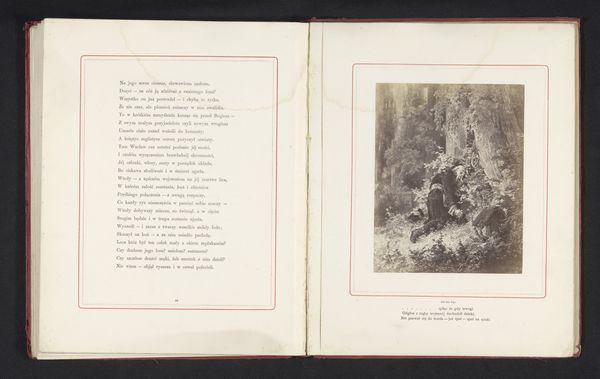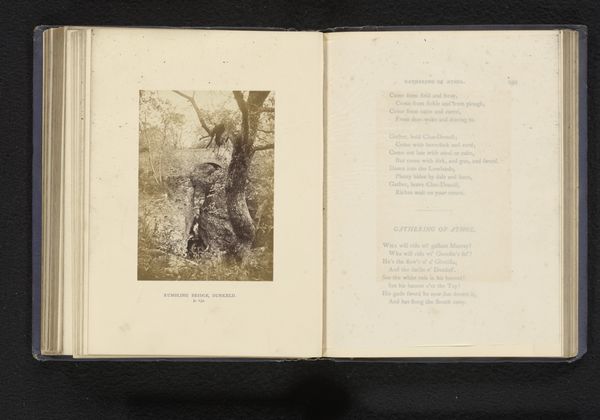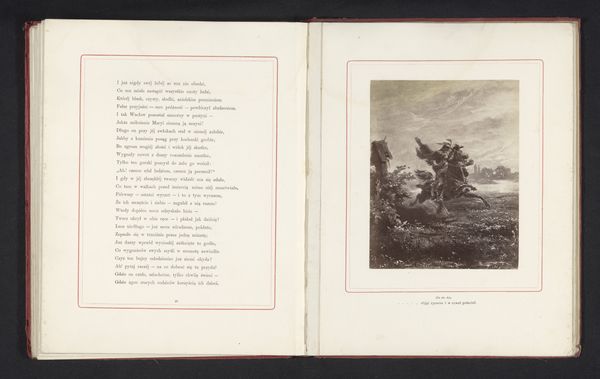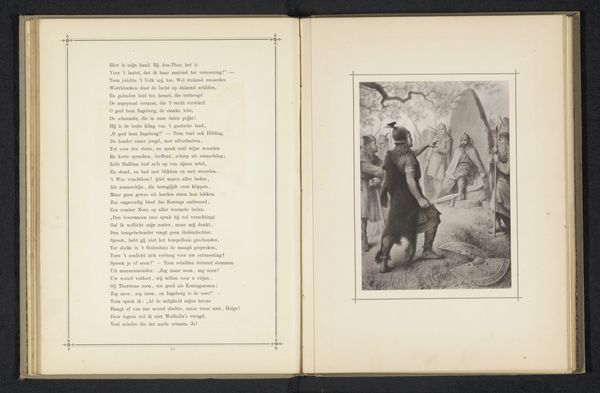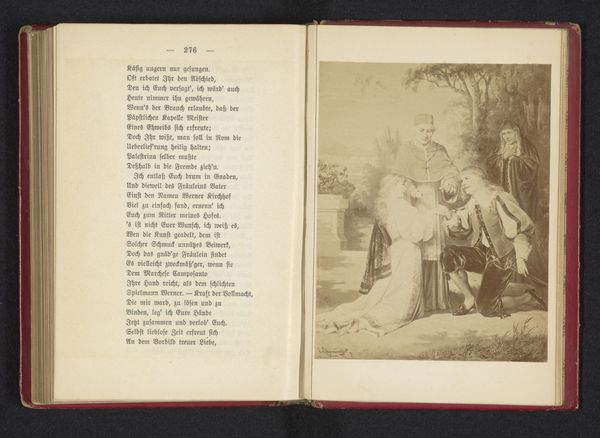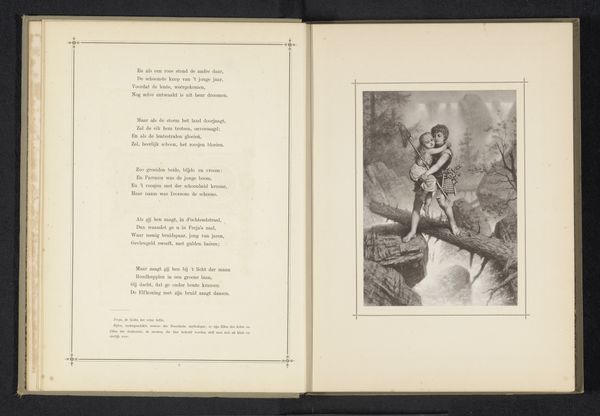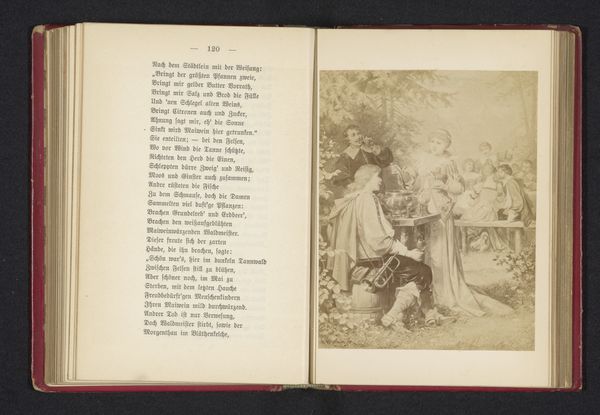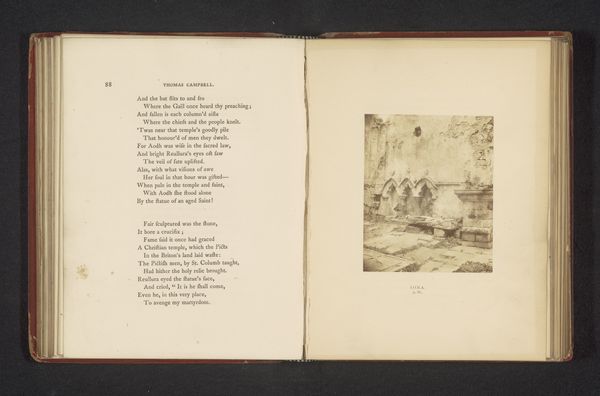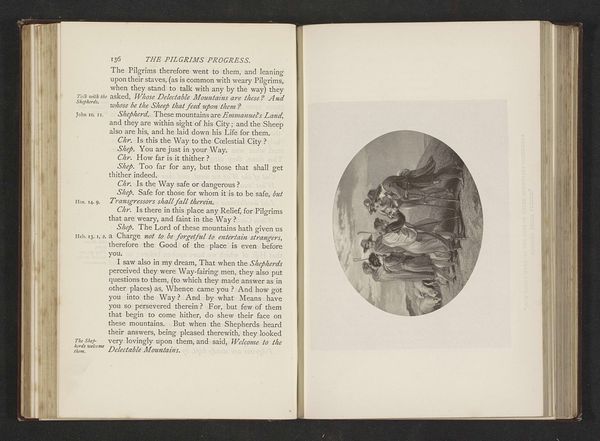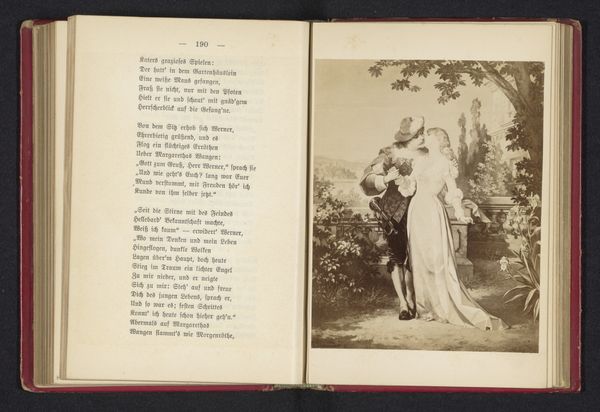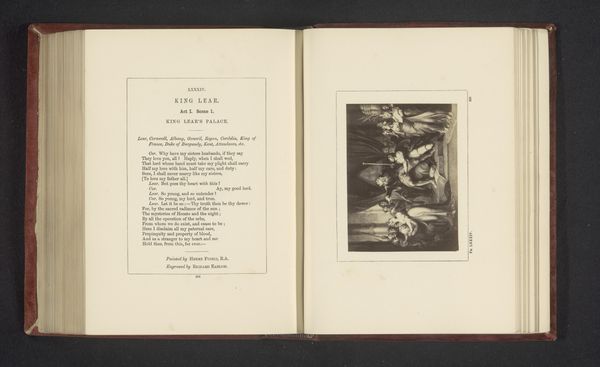
Fotoreproductie van een schilderij voorstellende een ridder en een vrouw op een bospad before 1876
0:00
0:00
Dimensions: height 187 mm, width 148 mm
Copyright: Rijks Museum: Open Domain
Curator: What immediately strikes me is the overwhelming melancholy in this photographic reproduction. There’s something so beautifully fragile in the way the figures are rendered. Editor: Yes, Konrad Brandel created this before 1876, and we’re looking at a “Fotoreproductie van een schilderij voorstellende een ridder en een vrouw op een bospad,” which translates to “Photographic reproduction of a painting depicting a knight and a woman on a forest path." I’m curious about the original painting—what were the artistic traditions around reproduction in Poland, at that time? Was photography primarily a tool for dissemination of artworks? Curator: I imagine it certainly played a part. Think about the Romanticism permeating the scene. It's not just documentation; Brandel's manipulated the light and composition, lending it a sense of theatrical staging—the textures and tonality evoke an idealized past. Did the availability of reproduced images shape the artistic tastes and visual literacy of a growing audience? Editor: Undoubtedly. Prints, in particular, democratized images, moving artwork from elite collections into wider circulation and fostering a culture of artistic engagement beyond the traditional art world. Also, looking at the tonal contrasts created in the printmaking process here, I think it also adds another layer: The act of reproducing adds, and I want to see what's gained here besides accessibility. How does it interact with craft and artistry, considering that romanticism here idealizes some very traditional notions? Curator: Maybe that longing for an idyllic past resonates so profoundly *because* of its accessibility, wouldn't you think? Here is this incredibly polished image. Editor: That tension—between production and consumption, high art and accessible media—it reshapes both. So the means *are* very interesting. A study of access also illuminates the ways it's shaped not only the production, but, importantly, the interpretation, which helps build its enduring cultural legacy. Curator: That makes me reflect on how easily an image can be shared today, with all sorts of tools and methods. It's hard not to look for a narrative here! But thinking about what kind of emotional story this object wants to express. Editor: Ultimately, looking closely reveals these old artworks are less frozen than they first appear; their contexts shift depending on access.
Comments
No comments
Be the first to comment and join the conversation on the ultimate creative platform.


